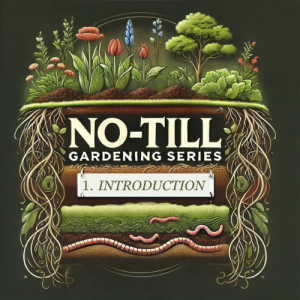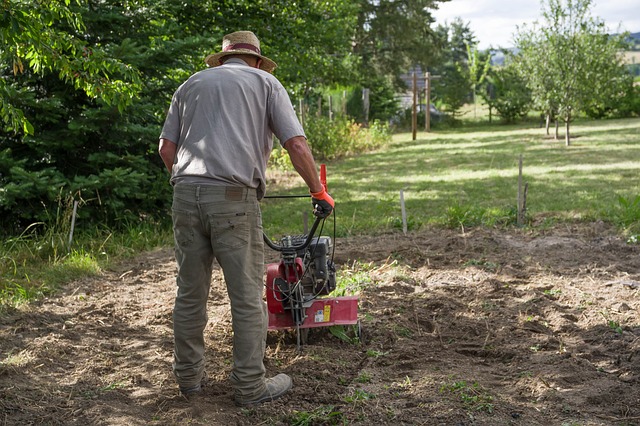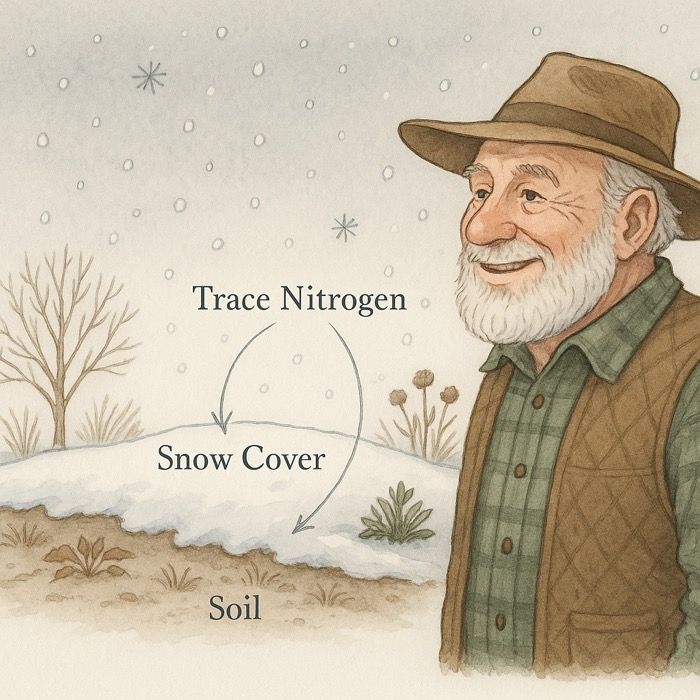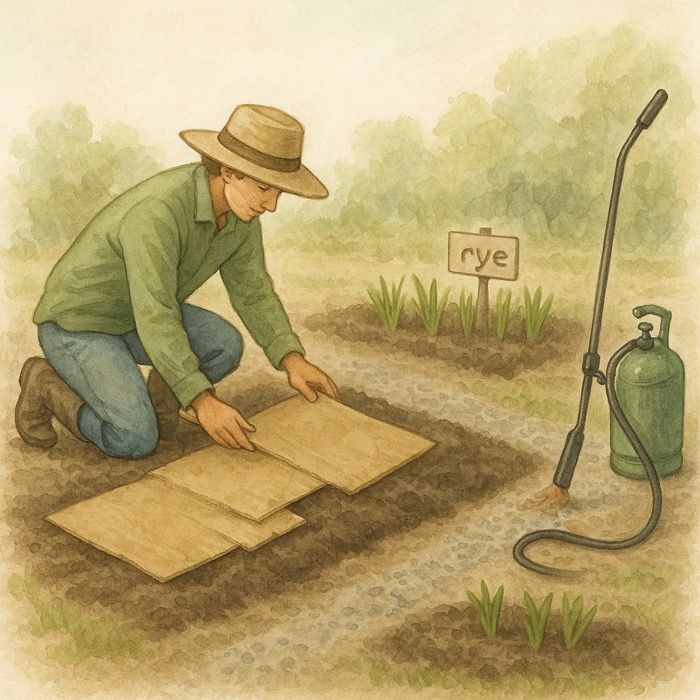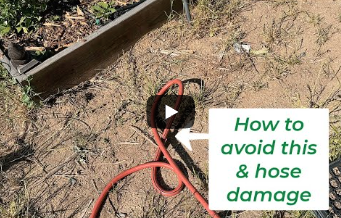No-Till Gardening: Introduction to a Soil-Friendly Revolution (Part 1)
This post marks the first in a 10-part series dedicated to no-till gardening, a soil-friendly approach that promotes sustainability, builds healthier soil, and simplifies gardening. In this series, we’ll guide you from the basics to advanced no-till techniques, making it easy for beginners and seasoned gardeners alike to adopt this method.
What is No-Till Gardening?
No-till gardening is a method where soil is left undisturbed, eliminating the need for tilling or turning. Instead, organic matter like compost, mulch, or straw is layered directly on top of the soil, providing nutrients and protecting the soil surface. The process allows plants to grow naturally, with minimal intervention, while letting earthworms, fungi, and microorganisms work their magic below ground.
No-till gardening closely mimics natural ecosystems, where organic matter accumulates on the ground, decomposing slowly over time. In forests and grasslands, this natural layering enriches the soil, promotes biodiversity, and creates a balanced environment for plant growth. By following similar principles, no-till gardening maintains the soil’s integrity and supports a self-sustaining, nutrient-rich ecosystem.
How to Start a No-Till Garden
No-till gardens can be created almost anywhere—whether on bare soil, grass, or even concrete. Here’s a simple way to start-
- Choose Your Location – Pick a sunny, well-drained area for your no-till bed.
- Add a Base Layer – Place a thick layer of cardboard or newspaper on the ground to smother weeds and grass.
- Layer Organic Matter – On top of the base, add 4-6 inches of compost, straw, leaves, or aged manure.
- Water Well – Water the layers thoroughly to settle the materials.
- Plant – You’re ready to start planting!
Why No-Till Gardening Works
No-till gardening works because it aligns with natural soil processes, maintaining soil structure, enhancing biodiversity, and building resilience. Here’s a closer look at why it’s so effective-
1. Preserves Soil Structure
- Traditional tilling disrupts the natural soil layers, destroying beneficial soil aggregates. These aggregates are essential for water retention, air flow, and root penetration.
- No-till gardening preserves this structure, allowing plant roots to grow deeply and easily while encouraging water to seep into the soil rather than running off.
2. Enhances Soil Biology
- Tilling disturbs the soil ecosystem, harming beneficial organisms like earthworms, mycorrhizal fungi, and bacteria.
- No-till provides an undisturbed environment where these microorganisms can thrive, decomposing organic matter into nutrients and improving soil fertility over time.
3. Suppresses Weeds Naturally
- One of the most appealing aspects of no-till gardening is natural weed suppression. The initial layers of cardboard or newspaper block light, killing existing weeds, while the thick mulch prevents new ones from sprouting.
- Over time, the organic layers create a dense mulch that minimizes weed growth, reducing the need for weeding.
4. Reduces Soil Erosion
- Tilled soil is more prone to erosion from wind and rain, washing away nutrients and exposing plant roots.
- No-till gardening keeps the soil covered year-round, protecting it from harsh elements and preventing erosion.
5. Retains Moisture Better
- By keeping the soil covered with organic layers, no-till beds retain moisture more effectively. This reduces the need for frequent watering and helps plants survive dry spells.
- The compost and mulch also improve water-holding capacity, making this method ideal for gardeners in areas with limited rainfall.
6. Saves Time and Effort
- No-till gardening is not only good for the soil, but it’s also easier on the gardener. There’s no heavy lifting, no constant tilling, and less weeding.
- This approach reduces labor, making it more accessible for those with physical limitations or anyone who wants a lower-maintenance garden.
The Benefits of No-Till Gardening for Soil Health
Healthy soil is the foundation of a thriving garden, and no-till gardening is one of the best ways to achieve it. Here are some key benefits of no-till gardening for soil health-
- Increased Organic Matter – By regularly adding layers of organic material, you boost the soil’s organic matter, making it more fertile and biologically active.
- Better Nutrient Availability – With improved microbial activity, nutrients become more readily available to plants, resulting in healthier, more productive growth.
- Enhanced Soil Aeration – No-till gardens maintain natural air pockets in the soil, supporting the oxygen needs of roots and beneficial organisms.
- Higher Resilience – Gardens that use no-till principles tend to withstand weather extremes better, as the robust soil structure improves water absorption and drought tolerance.
Conclusion
No-till gardening is a revolutionary approach that promotes soil health, biodiversity, and easier gardening. By aligning with nature’s methods, you’ll build a thriving garden that’s more sustainable and less labor-intensive. Whether you’re a beginner or an experienced gardener, no-till techniques offer a simple yet transformative way to garden smarter, not harder.
Stay tuned for the next episode in this 10-part series, where we’ll explore how to build your first no-till bed step by step!
More From Our Master Gardener
Recent Posts

❄️ Snow as Fertilizer – The Truth About “Poor Man’s Nitrogen”

5 Unexpected Winter Weed Control Strategies (That Don’t Involve Mulch)

Harnessing Winter Sun – Passive Solar Tricks for Your Garden

How to Grow Spinach – The Ultimate Beginner’s Guide for Tender, Nutritious Leaves

How to Grow Peas: The Ultimate Beginner’s Guide for Sweet, Crisp Harvests
